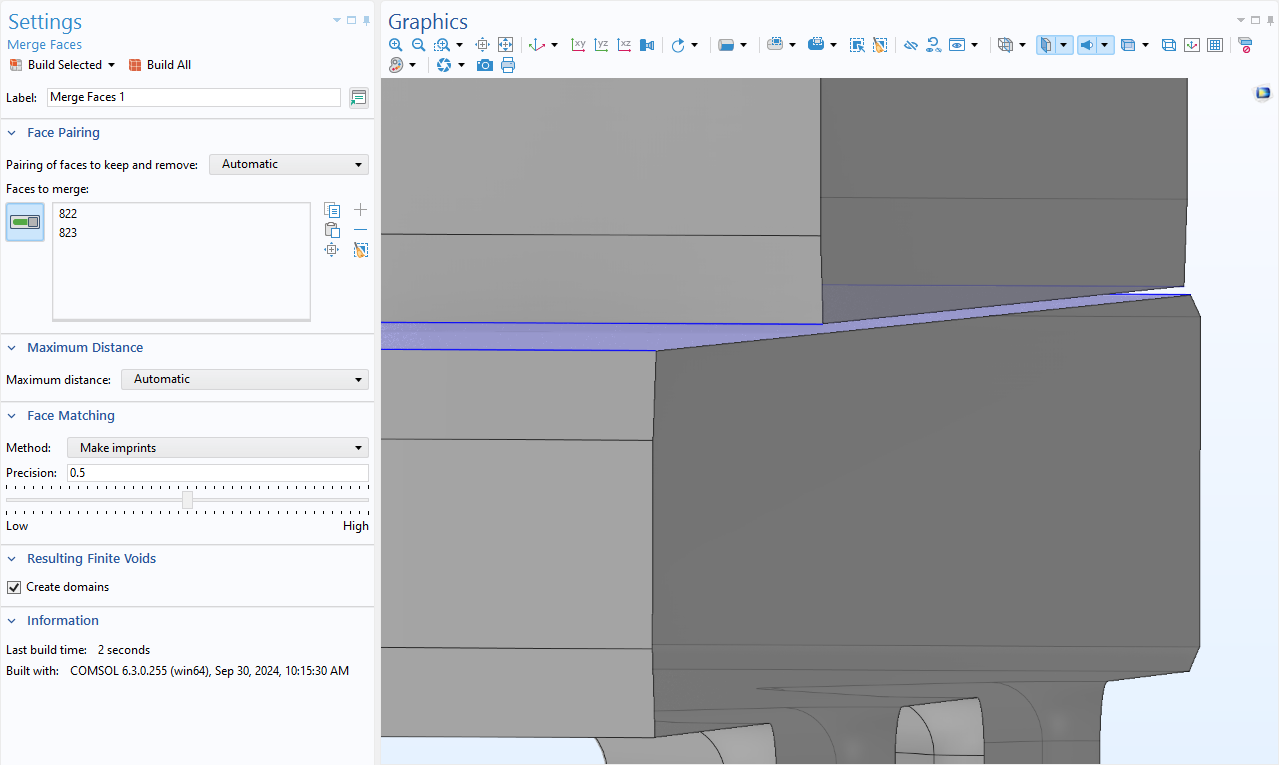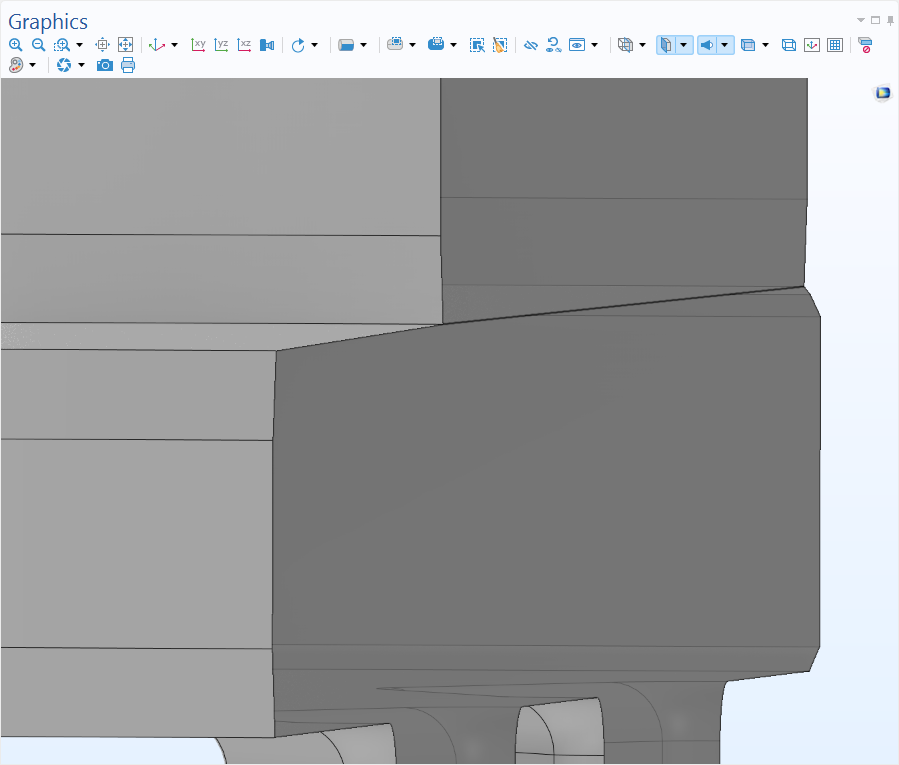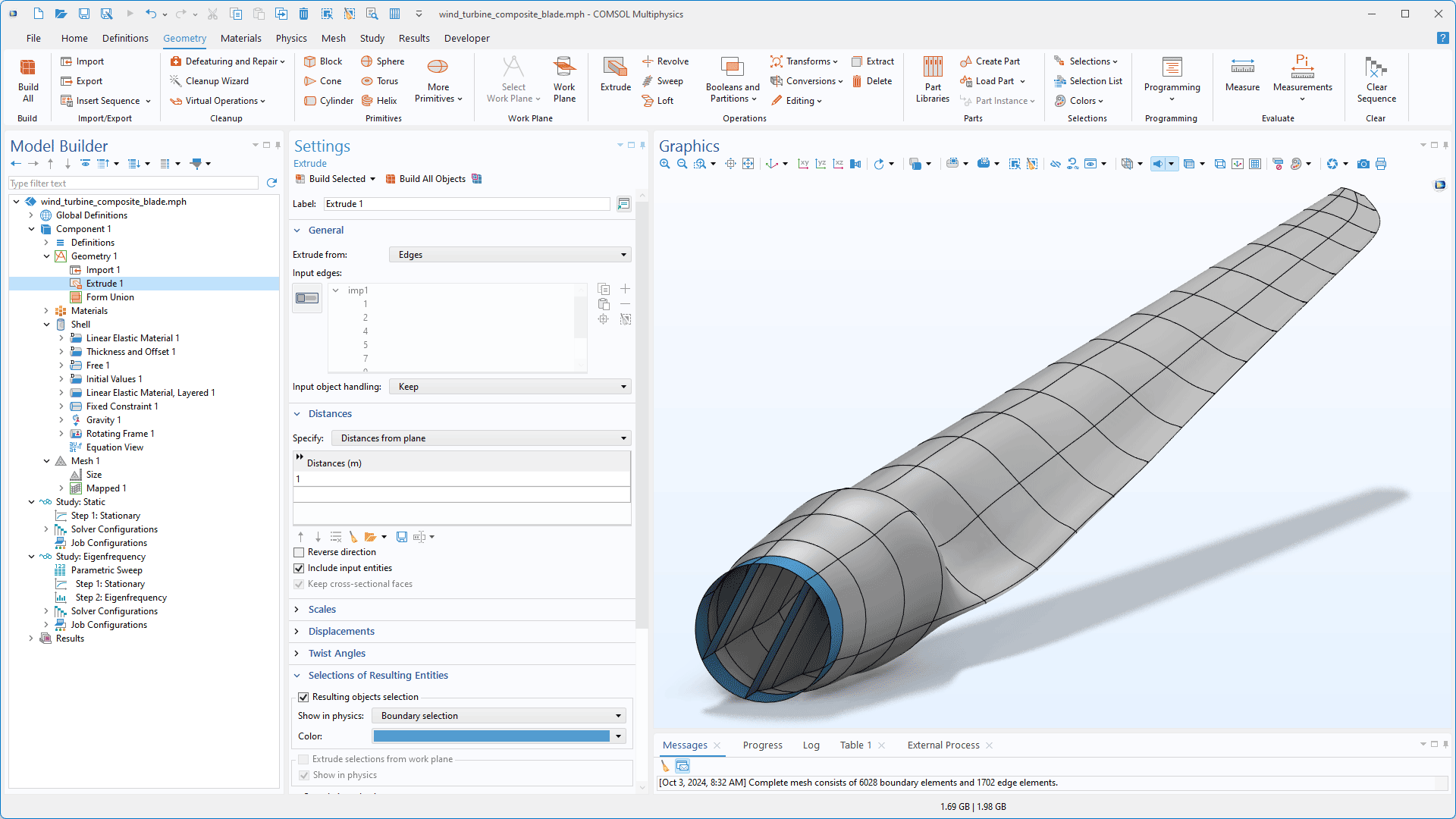Nouveautés pour la géométrie
La version 6.3 de COMSOL Multiphysics® introduit un nettoyage automatique des géométries pour les préparer au maillage; une nouvelle opération virtuelle de fusion des faces, utilisée pour supprimer de petits espaces entre des surfaces sélectionnées; et la possibilité d'ajouter des opérations virtuelles dans des parties de la géométrie ou des géométries planes. Pour en savoir plus sur ces mises à jour, consultez la page ci-dessous.
Nettoyage automatique de la géométrie
Les petits détails et les petits espaces dans la géométrie peuvent désormais être automatiquement détectés et supprimés, simplifiant ainsi la géométrie avant que celle-ci ne soit maillée et réduisant la taille de la simulation. Ce processus automatique identifie les petits détails, tels que les faces minces, les petites arêtes, les espaces étroits et les domaines minces, qui sont ensuite supprimés afin de préparer le modèle à l'analyse. Pour davantage de contrôle, l'option Assistant de nettoyage permet d'ajuster la taille des détails et de sélectionner les opérations de nettoyage.
La fonctionnalité Nettoyage de la géométrie peut automatiquement modifier les tolérances booléennes, ajouter une opération Supprimer des détails, et exploiter une fonctionnalité du module CAD Import ou du module Design, suivant les modules complémentaires détectés sur les licences disponibles. La fonctionnalité Nettoyage de la géométrie est illustrée dans les tutoriels Electrical Heating in a Busbar Assembly, Geometry Cleanup on a Wheel Rim Geometry, et Importing and Meshing a PCB Geometry from an ODB++ Archive. Notez que les options les plus avancées de la fonctionnalité Nettoyage de la géométrie nécessitent une licence avec le module CAD Import, le module Design ou l'un des LiveLink™ pour la CAO. Pour plus de détails, voir la CAD Specification Chart.
Opérations virtuelles
Les outils d'opérations virtuelles incluent désormais l'opération Fusionner les faces, qui fusionne des faces et élimine les espaces ou les régions entre les surfaces sélectionnées. Lorsque le module CAD Import, le module Design, ou l'un des LiveLink™ pour la CAO est utilisé, l'opération peut également fusionner des faces de différentes tailles et formes en créant automatiquement les empreintes nécessaires. L'opération Fusionner les faces est également intégrée au nouveau procédé de Nettoyage de la géométrie.
Une géométrie plane ou des séquences de parties d'une géométrie supportent désormais l'ajout de noeuds Constituer une union ou Constituer un assemblage, tout comme l'ajout d'opérations virtuelles et de la fonctionnalité Supprimer des détails (pour les modèles 3D uniquement). Il est ainsi possible de nettoyer la géométrie à un stade précoce du processus de création.
Améliorations pour les fonctionnalités Extrusion et Révolution
Dans la version 6.3, il est désormais possible d'extruder des arêtes en surfaces, et d'effectuer une révolution d'un point pour former une arête. Cette fonctionnalité est particulièrement utile pour étendre des géométries coque ou poutre importées. Lorsque l'on effectue une opération d'extrusion ou de révolution d'un objet esquissé dans une géométrie plane, toutes les sélections définies préalablement sont automatiquement reportées sur la géométrie 3D, facilitant ainsi l'implémentation de la physique du modèle.
Support for implementation of the ODB++ format was provided by Mentor Graphics Corporation pursuant to the ODB++ Solutions Development Partnership General Terms and Conditions (https://odbplusplus.com/design/terms-of-use/).



